Search engine optimization (SEO) is the process of optimizing your pages to rank in a search engine’s organic results.
Pay-per-click (PPC) is a form of online advertising where advertisers pay a fee each time someone clicks their ad.
There’s no conundrum between the two types of marketing. You don’t have to choose one or the other; the best companies use both.
Here’s how they can work together and produce magic:
1. Use PPC to promote your SEO content
Creating SEO content is the process of figuring out what your target audience is searching on Google and aligning your content to their search intent.
To start off, you need to find out what they’re searching for. The easiest way is to use a keyword research tool, like Ahrefs’ Keywords Explorer.
Here’s how you might find keywords for a hypothetical coffee equipment store:
- Go to Ahrefs’ Keywords Explorer
- Enter a relevant keyword (e.g., “coffee”)
- Go to Matching terms
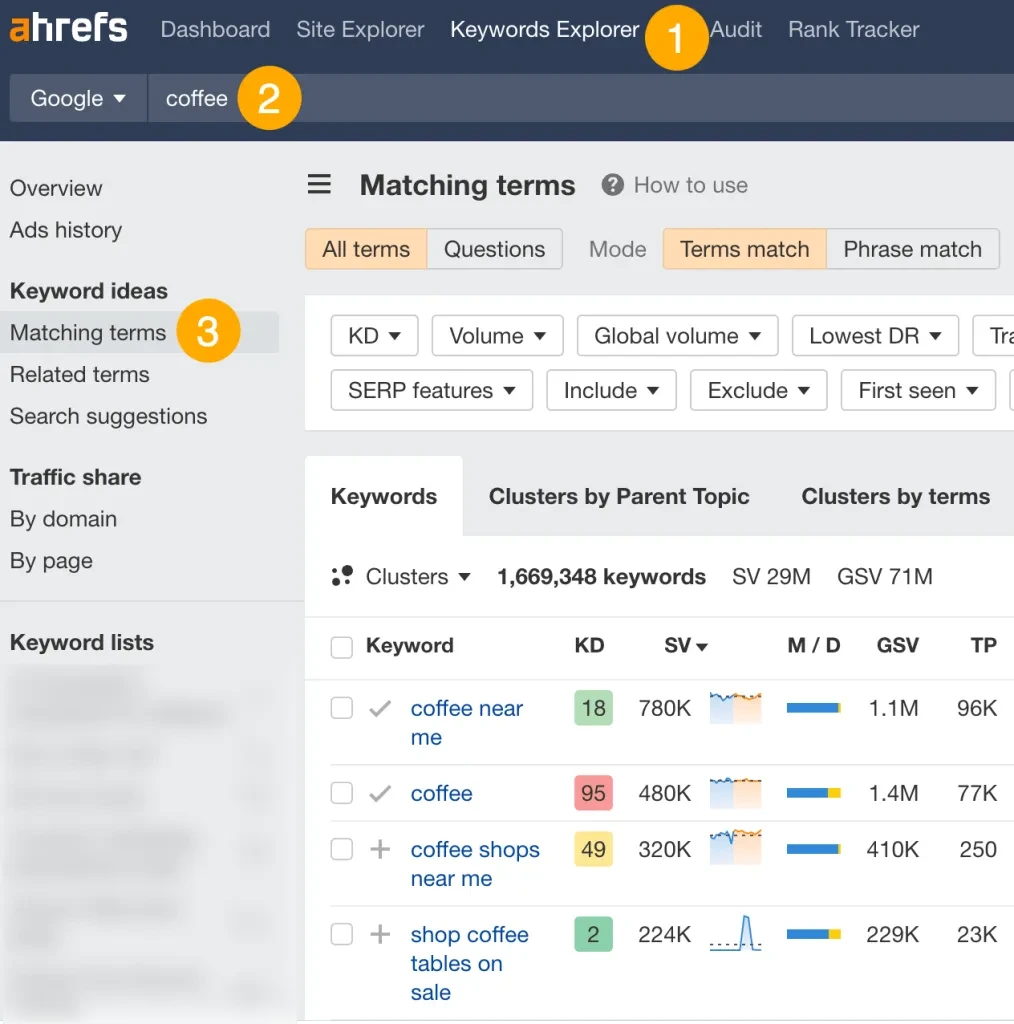
Go through the list and pick out keywords that are relevant to the site. For example, the keyword “how to grind coffee beans” seems like a good keyword to target.

Once we’ve chosen our keyword, we want to know what searchers are looking for specifically. Sometimes the keyword gives us an idea, but to be sure, we can look at the top-ranking pages.
So, click the SERP button and then click Identify intents to see what searchers are looking for:
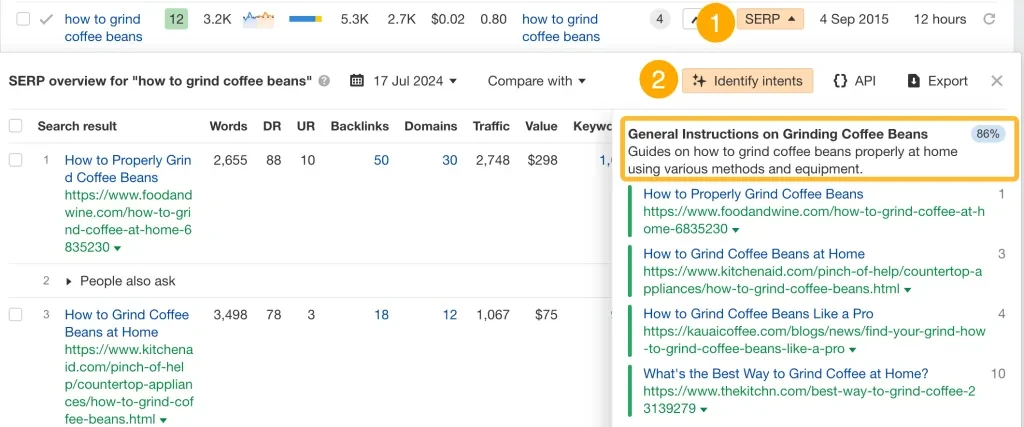
We can see that searchers are looking for techniques and methods to grind coffee beans at home, and especially without a grinder. If we want to rank high, we’ll likely have to follow suit.
Those are the basics of creating SEO content. But doing just this isn’t enough. After all, the quote goes, “if a tree falls in a forest and no one hears it, does it make a sound?”
This applies to your content too. You don’t want to create into a void; you want people to see and consume your content. This is where PPC comes in. You can run PPC ads to ensure that as many people see your content as possible.
For example, at Ahrefs, we run Facebook ads for our content:
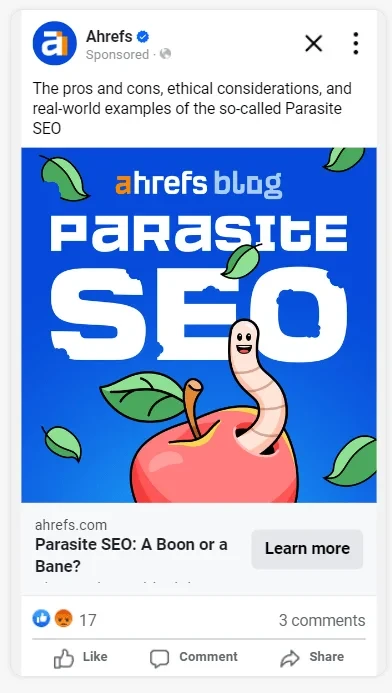
We also run ads on Quora:
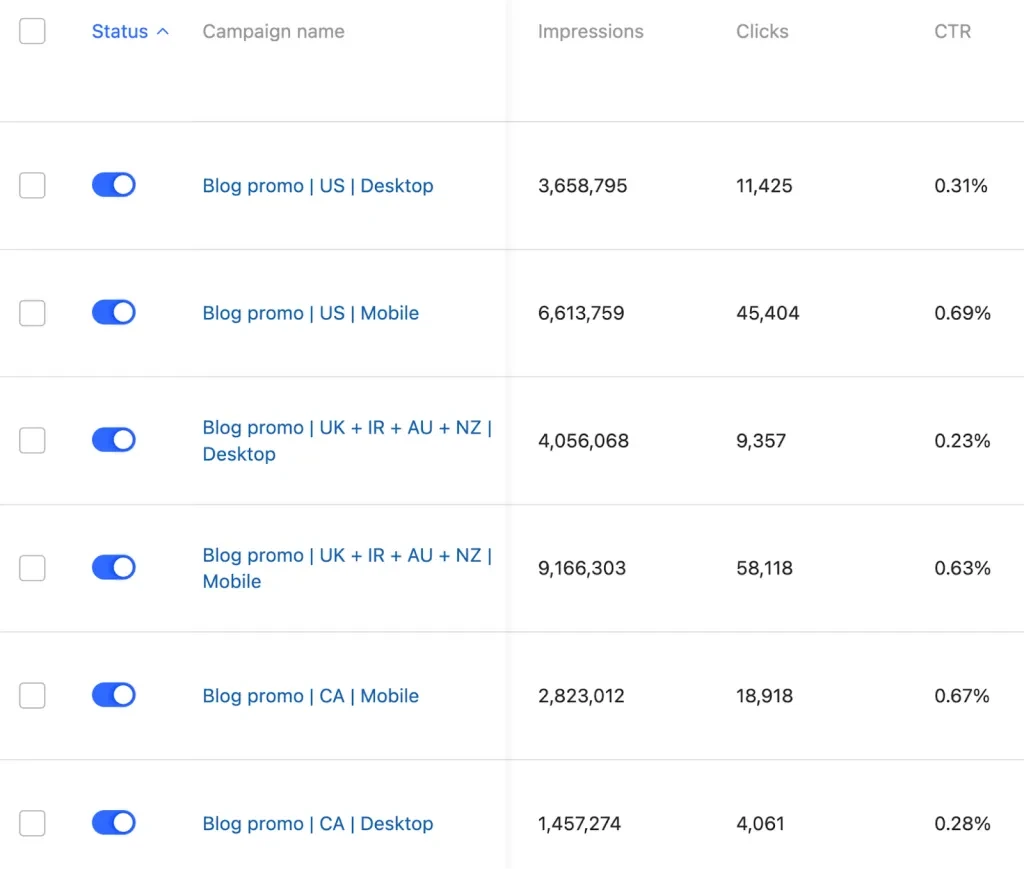
This way, we make sure that none of our content efforts go to waste.
2. Use PPC to build links
Links are an important Google ranking factor. Generally speaking, the more links your page has, the more likely it’ll rank high in the search results.
But acquiring links is hard. This is why it’s still a reliable ranking factor. And it’s also why there’s an entire industry behind link building, and tons of tactics you can use, all with varying levels of success.
One way you can consider building links to your pages is to run PPC ads. In fact, we ran an experiment a few years ago to prove that it was possible.
We spent ~$1,245 on Google search ads and acquired a total of 16 backlinks to two different pieces of content. (~$77-78 per backlink.) This is much cheaper than if you had to buy a backlink, which according to our study, costs around $361.44.
(It would be even more expensive if you acquired links via outreach, as you would have to consider additional costs like software, manpower, etc.)
3. Use retargeting on SEO content
Retargeting allows you to target visitors who have left your website.
Here’s how retargeting works:
- A visitor discovers your article on Google
- Your ad management software sets a cookie on the visitor’s browser, which allows you to show ads to these visitors
- When the visitor leaves your website and surfs the web, you can show ads and persuade them to return to your website
Depending on where they are on the buyer’s journey, you can convince them to take the next step.

For example, if someone found your website via your article on the “best espresso machines”, it’s likely they’re looking to buy. So, you can set your retargeting ad to encourage them to visit your espresso machines category page.
On the other hand, if a visitor discovered your website from your “what is a coffee grinder” article, they might still be early on the journey. In that case, it might be prudent to encourage them to sign up for your email list instead.
4. Identify important keywords and target them with both SEO and PPC
Every site has important keywords. For example, besides our brand and product terms, critical keywords are “keyword research”, “link building”, and “technical SEO”.
Since these keywords are important, it makes sense to dominate the SERPs for them. You can do this by simultaneously running ads for them while ranking in organic search. For example, Wix ranks for the keyword “create website for free” in both paid and organic SERPs:
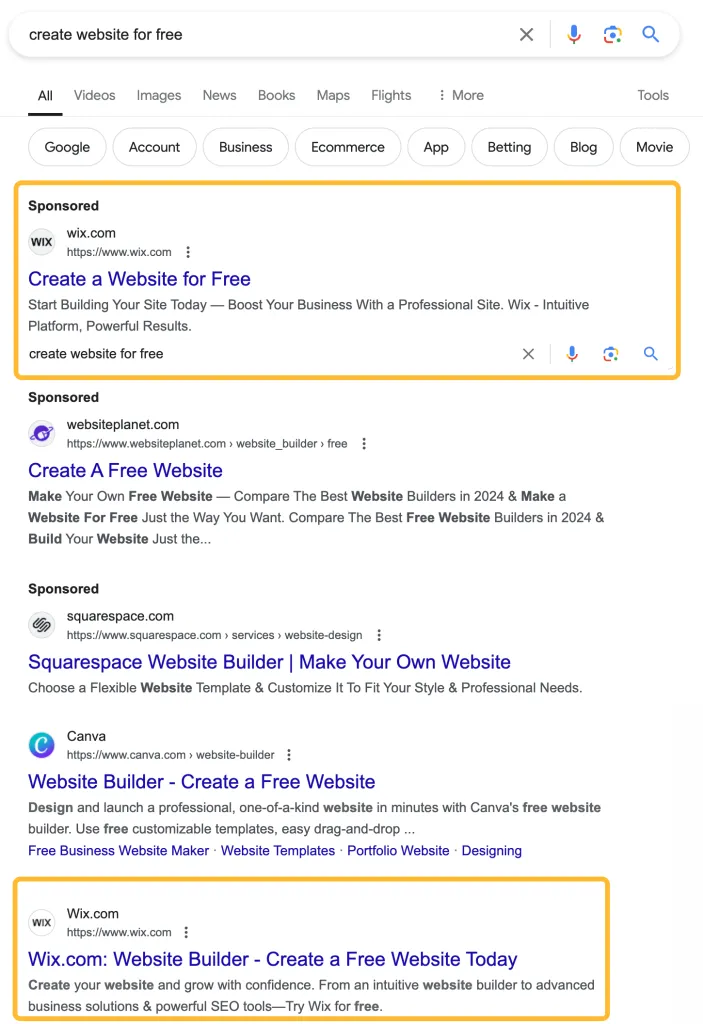
This is especially useful if you’re a new or smaller site. The keywords that are important to you are likely important to your competitors too. Which means you can’t compete with them overnight.
So, a good strategy is to target those keywords via PPC first, while investing in your SEO strategy. Over time, as you acquire more backlinks and gain more website authority, you’ll be able to compete with your competitors in organic search too.
When do SEO and PPC not work together?
While both channels are complementary, there are times where it may make more sense to choose one over the other.
When to choose PPC
If you fit these scenarios, it might be a better idea to go for PPC:
- You’re promoting a limited-time offer, event, or launching a product. According to our poll, SEO takes three to six months to show results. If your event, offer, or launch is shorter than the expected timeframe, it’ll be over even before SEO takes any effect.
- You need immediate, short-term results. If you need to show some results now, then PPC will be a better choice.
- You have a disruptive product or service. SEO depends on figuring out what people are already searching for. If your product or service is completely novel, then it’s likely no one is searching for it.
- Hyper-competitive SERPs. Some niches have competing sites with large SEO teams and deep pockets. Coupled with Google’s preference for known brands, if you’re in these niches, it can be difficult to compete. PPC offers a viable alternative for gaining visibility on the first page.
When to choose SEO
Here are times when it may make better sense to choose SEO:
- Keywords are too expensive. Some industries, like insurance or finance, have cost-per-clicks (CPC) up to a few hundred dollars. For example, the keyword “direct auto insurance san antonio” has a CPC of $275.
- Your niche is restricted. Certain industries or niches (e.g., adult, weapons, gambling, etc.) are prohibited or restricted from advertising.
- You have a limited budget. PPC requires money to begin, whereas SEO can drive traffic to your website at no direct cost per visitor.
- You’re building an affiliate site. Affiliate sites earn a commission when people buy from their recommendations. While it’s not impossible to build an affiliate site from PPC, it’s difficult to control the return on investment (ROI) since affiliate site owners cannot control sales conversion rates.
Final thoughts
There are cases where focusing on either SEO or PPC makes sense.
But most of the time, the best companies don’t discriminate between channels. If they produce positive ROI, then you should be using all marketing channels.
Source from Ahrefs
Disclaimer: The information set forth above is provided by ahrefs.com independently of Alibaba.com. Alibaba.com makes no representation and warranties as to the quality and reliability of the seller and products. Alibaba.com expressly disclaims any liability for breaches pertaining to the copyright of content.



